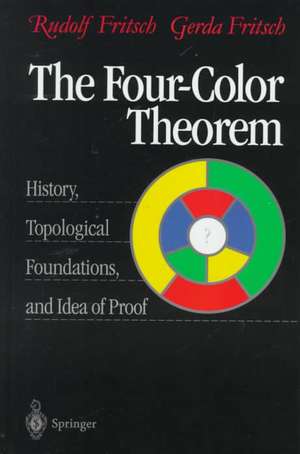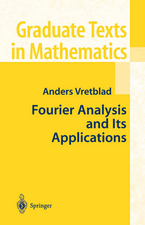The Four-Color Theorem: History, Topological Foundations, and Idea of Proof
Autor Rudolf Fritsch, R. Fritsch, G. Fritschen Limba Engleză Hardback – 31 iul 1998
Preț: 583.24 lei
Preț vechi: 686.16 lei
-15% Nou
Puncte Express: 875
Preț estimativ în valută:
111.61€ • 119.34$ • 93.05£
111.61€ • 119.34$ • 93.05£
Carte tipărită la comandă
Livrare economică 17 aprilie-01 mai
Preluare comenzi: 021 569.72.76
Specificații
ISBN-13: 9780387984971
ISBN-10: 0387984976
Pagini: 260
Dimensiuni: 162 x 241 x 18 mm
Greutate: 0.55 kg
Editura: Springer
Locul publicării:New York, NY, United States
ISBN-10: 0387984976
Pagini: 260
Dimensiuni: 162 x 241 x 18 mm
Greutate: 0.55 kg
Editura: Springer
Locul publicării:New York, NY, United States
Public țintă
Professional/practitionerCuprins
It's History.- Topological maps.- Topological Version of The Four-Color Theorem.- From Topology to Combinatorics.- The Combinatorial Version of The Four-Color Theorem.- Reducibility.- The Quest for Unavoidable Sets.
Textul de pe ultima copertă
This elegant little book discusses a famous problem that helped to define the field now known as graph theory: what is the minimum number of colors required to print a map such that no two adjoining countries have the same color, no matter how convoluted their boundaries are. Many famous mathematicians have worked on the problem, but the proof eluded formulation until the 1970s, when it was finally cracked with a brute-force approach using a computer. The Four-Color Theorem begins by discussing the history of the problem up to the new approach given in the 1990s (by Neil Robertson, Daniel Sanders, Paul Seymour, and Robin Thomas). The book then goes into the mathematics, with a detailed discussion of how to convert the originally topological problem into a combinatorial one that is both elementary enough that anyone with a basic knowledge of geometry can follow it and also rigorous enough that a mathematician can read it with satisfaction. The authors discuss the mathematics and point to the philosophical debate that ensued when the proof was announced: just what is a mathematical proof, if it takes a computer to provide one - and is such a thing a proof at all?
Descriere
This book discusses a famous problem that helped to define the field now known as topology: What is the minimum number of colors required to print a map so that no two adjoining countries have the same color? This problem remained unsolved until the 1950s, when it was finally cracked using a computer. This book discusses the history and mathematics of the problem, as well as the philosophical debate which ensued, regarding the validity of computer generated proofs.














